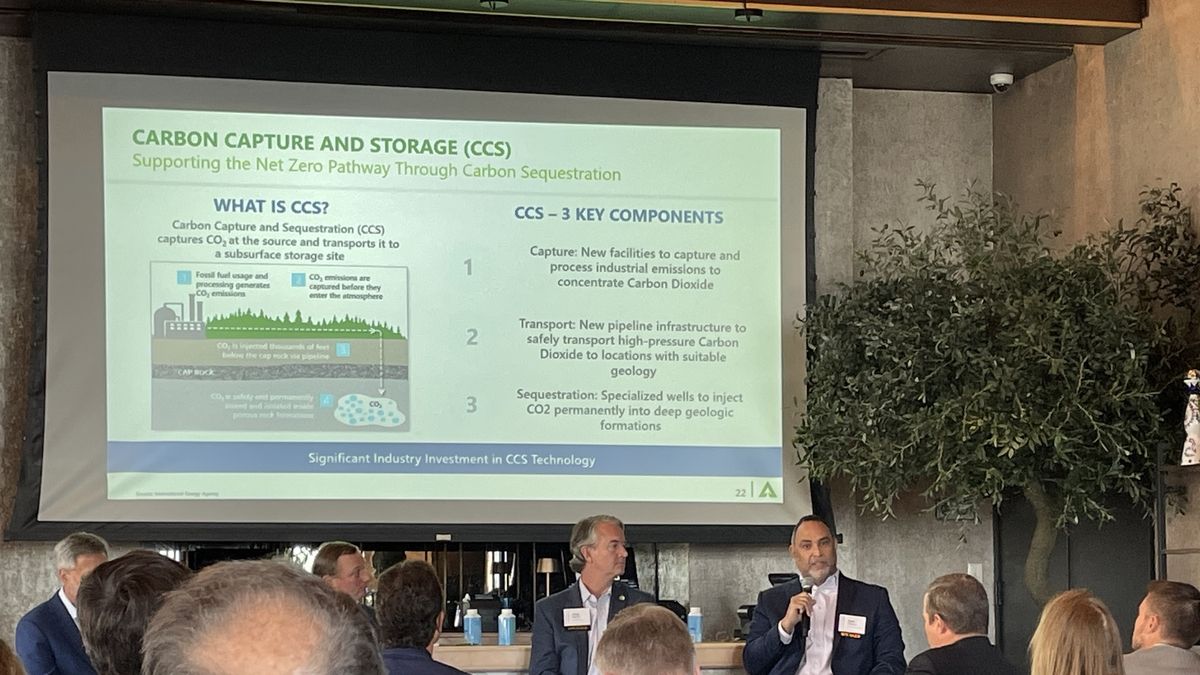
A Step Forward in Sustainability: Weyerhaeuser and Lapis Energy Join Forces for Carbon Sequestration
Published by Todd Bush on February 28, 2024
Weyerhaeuser, a prominent forestry company, and Lapis Energy, a specialist in carbon capture and sequestration (CCS), have revealed a joint endeavor to investigate the possibility of storing captured carbon dioxide underground. This exclusive two-year partnership, covering more than 187,500 acres across Arkansas, Louisiana, and Mississippi, has the potential to substantially influence local carbon capture projects and support the realization of long-term sustainability objectives.

>> Read more about Lapis Energy
Carbon capture and sequestration (CCS) is vital to industrial decarbonization by capturing carbon emissions from power plants, ethanol facilities, cement, steel, and other sources and storing them underground permanently. This technology is essential in achieving net-zero emissions, especially for industries such as cement and concrete production, where reducing emissions through conventional methods is difficult.
The Players: Weyerhaeuser and Lapis Energy
As the leading figure in the forestry sector, Weyerhaeuser is well-known for its dedication to sustainable practices. Managing the largest private timberlands in North America, the company upholds internationally recognized sustainability standards while responsibly overseeing its extensive resources.
Weyerhaeuser has a multi-year growth strategy to acquire additional acreage. This past year the company closed nearly 83,000 acres in Mississippi and the Carolinas.
Lapis Energy, founded in 2020, specializes in the creation and execution of CCS projects, collaborating with industries to achieve their environmental objectives.
Carbon sequestration involves capturing carbon dioxide emissions, typically from industrial sources, and storing them in geological formations deep underground. This process effectively prevents these harmful emissions from entering the atmosphere, contributing to climate change mitigation.

Overview of Weyerhaeuser and Lapis Energy's Exclusive Exploration Agreement
This partnership sets the stage for investigating the potential of five designated locations across Arkansas, Louisiana, and Mississippi for carbon sequestration. Over the two-year assessment period, Lapis Energy will evaluate the suitability of each site for storing captured carbon dioxide. If the technical and commercial appraisals produce favorable outcomes, Lapis will have the opportunity to further develop these sites, potentially resulting in the establishment of permanent CCS facilities catering to large-scale industrial emitters.

Weyerhaeuser and Lapis Energy Forge Path for Carbon Sequestration in U.S. South
>> In Other News: IDTechEx Takes a Look at Key Priorities for Water Electrolyzer Material and Component Innovation
Gulf Coast Carbon Partnership
This partnership has enormous potential for the future of carbon capture and sequestration in the Gulf Coast of the United States. By examining the possibility of large-scale carbon storage, the project lays the groundwork for creating essential infrastructure to assist regional industries in reaching their decarbonization objectives. Importantly, the potential benefits of the project go beyond the local area, as effective carbon sequestration in the cement and concrete industry can substantially aid in achieving net-zero emissions targets worldwide.
This arrangement benefits both parties. Weyerhaeuser maximizes the value of its land for carbon sequestration, making a substantial contribution to combating climate change. Meanwhile, Lapis Energy expands its portfolio and solidifies its position as a top provider of CCS solutions in North America.
Lapis Project Blue Timeline

Carbon Storage Impact
The collaboration between Weyerhaeuser and Lapis Energy perfectly supports global efforts to address climate change. By exploring and potentially implementing large-scale carbon sequestration projects, this initiative directly contributes to reducing greenhouse gas emissions and mitigating the effects of climate change.
Additionally, the development of CCS infrastructure can create new job opportunities and contribute to the growth of the clean energy sector. Furthermore, achieving successful carbon sequestration aligns with the broader objective of achieving sustainability and combating climate change. By capturing and storing carbon emissions, the technology offers a crucial tool in achieving long-term environmental and economic sustainability.
Advancing Carbon Sequestration in the South
By investigating the potential of large-scale carbon sequestration, the collaboration is paving the way for mitigating climate change and achieving long-term sustainability objectives. This initiative highlights the significance of partnerships and technological innovation in driving effective solutions for a cleaner and healthier planet. The future of carbon capture and sequestration holds immense potential, and partnerships like these will play a crucial role in shaping a more sustainable future for generations to come.
Subscribe to the newsletter
Daily decarbonization data and news delivered to your inbox
Follow the money flow of climate, technology, and energy investments to uncover new opportunities and jobs.
Latest issues
-
How 45Q Credits Revived This Troubled $9B Megaproject
Inside This Issue 💰 How 45Q Credits Revived This Troubled $9B Megaproject 🍁 Commencement of First Phase Operations for a Carbon Capture and Storage (CCS) Project in Canada 🤝 Haffner Energy Secures...
-
The Deal Structure Everyone's About to Copy
Inside This Issue 💼 The Deal Structure Everyone's About to Copy 📈 Exxonmobil Raises Its 2030 Plan – Transformation Delivering Higher Earnings, Stronger Cash Flow, and Greater Returns ⚡ Nextera Wor...
-
Inside XCF Global's $300M Bet to Double U.S. SAF Output
Inside This Issue ✈️ Inside XCF Global's $300M Bet to Double U.S. SAF Output ⚙️ Capsol Technologies Signs MoU with US Utility to Deploy CapsolGT® for Low-carbon Gas Power Generation 🏭 Babcock &...
Company Announcements
-
Clean Planet Technologies (CPTech), part of the Clean Planet Group, has announced that its core pyrolysis-oil upgrading process has now been formally patented in both the United States and Saudi Ar...
-
(December 12, 2025 - Oslo, Norway) Nel ASA (Nel, OSE: NEL) is pleased to announce that following a seven-year development program, and now a successful start-up and production of clean hydrogen on ...
-
Hydrogen Technology Venture Launches in Bowling Green
BOWLING GREEN, Ky. — A new tech company is coming to Bowling Green, bringing dozens of jobs to Warren County. What You Need To Know UFS ARK will be a joint venture of United Fiber Sensing and OgM...
-
HyOrc Positions Green Methanol as the Economic Solution to Shipping’s Decarbonization Challenge
HOUSTON, Dec. 12, 2025 (GLOBE NEWSWIRE) -- HyOrc Corporation (OTCID: HYOR), a fully SEC-reporting clean-energy company focused on decarbonizing heavy industry, today commented on the growing global...